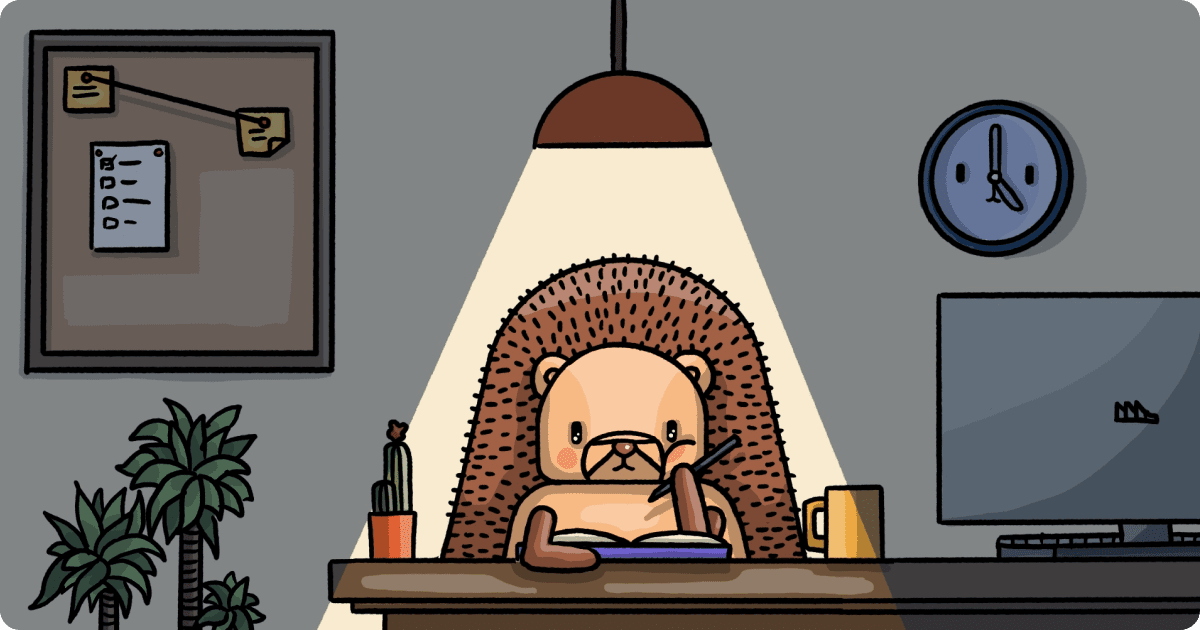
Our new objective: Nail Self Serve
Jun 10, 2022
Contents
The longer your strategy gets, the more useless it becomes.
That's why, at PostHog, we communicate strategy as 'Nail X', where X is the thing we need to nail. It's simple and effective.
We recently switched from Nail Enterprise to Nail Self Serve. This walks you through the previous context, and why we made that change.
James Hawkins is PostHog's Co-Founder & CEO. He launched PostHog with Tim Glaser in February 2020 as part the Y Combinator W20 batch. He lives in Cambridge, England with his wife Fran, daughter Ruby, and Wally (a cat).
Why did we focus on Nail Enterprise in the first place?
The best products are generally built for end users.
The game we're playing isn't to please C-level executives or procurement - we want an engineer in any size organization on Earth to be able to use our software in production without getting up from their desk. If they work at a larger company, and if we provide them with a great experience, they'll share the platform with their peers, and will probably want to upgrade to one of our paid offerings. Our open source and free user base is our sales team.
Our original go to market plan was therefore a little like this:
- get our open source project to product market fit
- get a paid mid-size (at the time, ~$20K-$40K a year) product to product market fit
- get a paid large-size ($200K+ a year) product to product market fit
It took us until last Summer to get the open source product to feel successful. It became less buggy, easier to deploy, better featured and more scalable. As a result, we saw our inbound growth increasing and our retention improving.
We then focused on getting five reference customers. It turned out, we had to Nail Funnels to do this.
What changed?
Things went much better than we thought. For the last six months, our paid products have averaged 20% month over month revenue growth - that's an 8.9x increase per year (for context - 3x is considered great, and Lenny's Newsletter breaks this out in more detail).
Three things combined caused this:
- we were able to get larger (generally, up to $70k) deals than we expected
- we made it easier to pay for our paid product, which led to more deals that we expected
- we had more existing customer growth than we expected
Then we noticed something else.
Some customers are very fast (a couple of weeks, or less) to sell to, with minimal interaction, whereas others take months and are very intense. In fact, almost none of the customers that have put us through a big buying process have converted to revenue yet.
What does Nail Self Serve mean?
So we should do more of what's working.
For product, this means:
- Quality: Our core features (insights, recordings, feature-flags / experimentation) work like a Swiss watch
- Self-Service Subscription: Customers of every size sign-up, start using and subscribe to PostHog without asking us for help
- Deployments: PostHog is the easiest self-hosted product to deploy and scale in the world
For go to market, this means:
- Customer Success: Focus on time to revenue (for example, one of our Customer Success team's key results is volume of deals in our target range per week - rather than trying to hit an overall revenue figure)
- Marketing: Accelerate word of mouth growth
- Website and Docs: Make community self serve (for example, make our docs rather than Slack the main support channel)
A snapshot of the future
Today, we're very good at serving large mid-market B2B companies who can buy quickly (through self serving).
I suspect we'll focus on B2C after the above is completed. From customer calls, it feels like this is how we'll go from landing $20k-$70k customers in a couple of weeks to $100k to $300k customers in the same, short time frame. It's much more appealing to do this, than to sell to B2B Enterprises that'll take months or years to purchase from us.
We already have plenty of (paying) customers in B2C, but to focus on it would require stronger mobile support, greater scalability still, and a suitable pricing model so we capture the right amount of value.
Long term, we think the future of our revenue will come from large enterprise. We're a natural fit - data control, consolidating multiple vendors, and complete extensibility. However, we want to avoid needing to go through complex purchasing decisions whilst there are easier ways to increase our numbers.
PostHog is an all-in-one developer platform for building successful products. We provide product analytics, web analytics, session replay, error tracking, feature flags, experiments, surveys, LLM analytics, data warehouse, CDP, and an AI product assistant to help debug your code, ship features faster, and keep all your usage and customer data in one stack.









